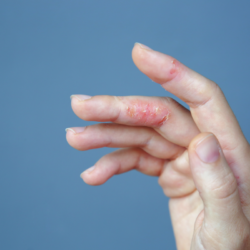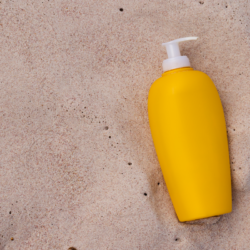In the current era of medicine, intranasal phototherapy is emerging as an innovative, non-invasive solution, particularly in the treatment of allergies at home. Red light, a key component of this technology, is attracting interest for its potential therapeutic benefits. This introduction explores the effectiveness of red light in phototherapy, a promising method of alleviating allergic symptoms in the comfort of the home.
Phototherapy, light therapy, photobiomodulation: what’s the difference?
Phototherapy, light therapy and photobiomodulation: three methods using light for therapeutic benefits, but with distinct approaches. Phototherapy, with its various wavelengths of light, is aimed at conditions such as allergies or skin problems. Luminotherapy, which targets seasonal affective disorders, uses artificial light to simulate daylight. Photobiomodulation , using the red and infrared spectrum, focuses on cell regeneration and pain reduction. Each of these light therapy techniques has specific applications and distinct beneficial effects.
What is intranasal phototherapy?
Intranasal phototherapy is a form of light treatment that uses a specific wavelength of light to target and treat allergy symptoms. It is a non-invasive treatment that can be easily administered at home, making it particularly interesting for those looking to manage their allergies without the use of medication.
How does intranasal phototherapy work?
Intranasal phototherapy works by emitting light at a specific wavelength that has been shown to reduce inflammation and allergic symptoms. This light is applied to the inside of the nose using a specially designed device, which allows the light to reach directly the nasal mucosa where many allergic symptoms occur.
One of the main advantages of intranasal phototherapy is its effectiveness in treating allergies. Indeed, numerous studies have shown that this technique is capable of significantly reducing allergic symptoms, including nasal congestion, sneezing and itching. Another major advantage of Humer intranasal phototherapy is its ease of use. Unlike many other treatments, it can be administered at home without the intervention of a healthcare professional. This makes it not only practical, but also affordable for many people.
Humer stop allergies – Intranasal device
HUMER STOP ALLERGIES – Intranasal phototherapy device offers an effective and gentle solution to relieve the most troublesome symptoms of allergic rhinitis. Here are some of the product’s key features:
- Local action
- No pain
- Non-drowsy
- Rechargeable battery
- 2-year guarantee
Recommendations for use
The HUMER STOP ALLERGIES intranasal phototherapy device is indicated for the treatment and relief of the symptoms of allergic rhinitis (rhinorrhoea, nasal congestion and itching). This device is a healthcare product which, under these regulations, bears the CE mark. It can be used in children aged 6 and over. We recommend that you read the instructions carefully before use.
How can I stop allergies at home?
Using the Humer intranasal phototherapy device at home is fairly straightforward. First, you insert the nozzle of the device into your nose. Then you activate the device so that it emits light. We recommend using the device twice a day for best results.
Safety considerations
Although Humer intranasal phototherapy is generally considered safe, it is important to follow certain safety instructions. For example, you should never use the device while driving or doing anything that requires your full attention. In addition, you should always clean the device after each use to avoid contamination.
The non-medicinal technology of Humer intranasal phototherapy
HUMER STOP ALLERGIES, the intranasal phototherapy device, is a clinically proven answer to allergic rhinitis. Its advanced technology emits two specific wavelengths of the light spectrum to target and treat allergic symptoms.
- Visible red light (660 ± 5 nm): This wavelength limits the release of histamine, a chemical responsible for the allergic reaction.
- Infrared light (940 ± 5 nm): This wavelength emits heat which is perceived by the cells as an anti-inflammatory signal. This guides the body’s defence cells towards the site of inflammation, limiting the effect of histamine.
Effective and natural
Phototherapy is a non-medicinal treatment method that uses the physical properties of light. Long used for skin diseases such as psoriasis, its effectiveness for allergic rhinitis has been proven in clinical trials. According to numerous scientific studies, red light (660 +- 5nm) and infrared light (940 +- 5nm) rapidly relieve the symptoms of allergic rhinitis (runny nose, blocked nose, itchy nose, etc.) and coughing, induced by allergens such as pollen, dust mites and animal hair.
Applications and benefits of phototherapy:
Here is a table summarising the benefits and applications of phototherapy:
| Application of Phototherapy | Effect sought | Scientific references |
|---|---|---|
| Skin diseases | UV treatment | Grzybowski A, Sak, J, Pawlikowski J (2016) |
| Depression and sleep disorders | Visible light for relief | Cho, HK, et al (2015) |
| Muscle pain | Red and infrared light for regeneration | Cotler HB, et al (2015) |
| Allergic rhinitis | Visible light to reduce symptoms | Kennedy R, Robertson L (2020); Emberlin JC, Lewis RA (2009) |
| Jaundice in newborns | Used since the 1950s | NICE UK (2017) |
| Insulin resistance | Improved glycaemia regulation | New in the field of insulin resistance: Red light |
| Skin health | Red light for cell regeneration and reduction of inflammation and wrinkles | The benefits of red light for the skin |
How to prevent allergies
Probiotics are living micro-organisms that are beneficial to health. They can have a positive impact on intestinal flora, improving the immune system. Research suggests that probiotics can help prevent and treat certain allergies. Here’s how you can use probiotics to prevent allergies:
- Consume probiotics regularly: For probiotics to be effective, you need to consume them regularly. They are found in certain fermented foods such as yoghurt, kefir, sauerkraut, kimchi, miso and certain cheeses.
- Probiotic supplements: You can also take probiotic supplements, but make sure you choose a quality product, ideally recommended by a health professional.
- Diversify your probiotic strains: There are many different strains of probiotics and each has its own benefits. Some, such as Lactobacillus GG and Bifidobacterium lactis, have been shown to be effective in preventing or treating allergies. For maximum effectiveness, try to diversify the strains of probiotics you consume.
- Healthy diet: Probiotics need a healthy environment to survive and multiply. A diet rich in fibre, fruit and vegetables and low in processed foods helps maintain a healthy gut microbiota, which can help prevent allergies.
- Start early: Some studies suggest that taking probiotics during pregnancy and breastfeeding can reduce the risk of allergies in children. However, it is important to consult a healthcare professional before taking probiotics during this period.
It is important to note that although probiotics can help prevent certain allergies, they are not a miracle solution and do not replace traditional medical treatment in the case of severe allergies. Always consult a healthcare professional for personalised advice.
FAQ
Q1: Is Humer intranasal phototherapy safe? A1: Yes, Humer intranasal phototherapy is generally considered safe. However, as with any treatment, it is recommended that you consult a healthcare professional before starting to use it.
Q2: Can I use Humer intranasal phototherapy if I’m pregnant? A2: It is always advisable to consult your doctor before starting any new treatment during pregnancy.
Q3: What are the side effects of Humer intranasal phototherapy? A3: The side effects of Humer intranasal phototherapy are generally mild and may include slight nasal irritation.
Q4: Where can I buy a Humer intranasal phototherapy device? A4: You can buy a Humer intranasal phototherapy device in many pharmacies and medical supply shops, as well as online.
Q5: How do I know if Humer intranasal phototherapy is working for me? A5: As with any treatment, the effectiveness of Humer intranasal phototherapy varies from person to person. It is advisable to keep a symptom diary to monitor progress.
Q6: Can Humer intranasal phototherapy replace my allergy medication? A6: Although Humer Intranasal Phototherapy can help reduce allergy symptoms, it is important not to stop taking your allergy medication without talking to your doctor.
References
- https://pubmed.ncbi.nlm.nih.gov/31594294/
- https://www.nice.org.uk/guidance/ipg616
- https://www.intechopen.com/chapters/32972
- https://pubmed.ncbi.nlm.nih.gov/19476405/







